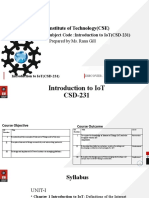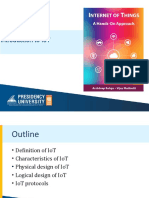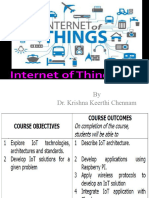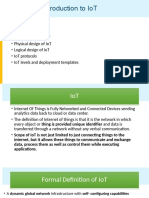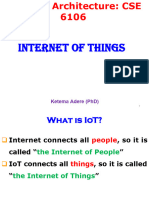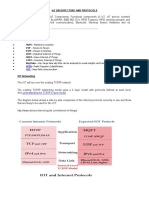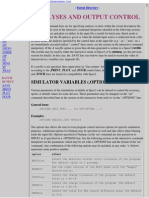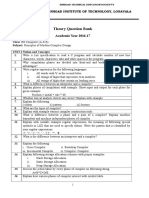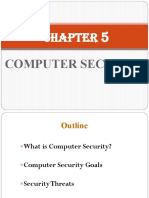0% found this document useful (0 votes)
39 views13 pagesUnit - 4.1 Communication in IoT Devices - IoT Protocols
This document outlines the course on Internet of Things (IoT) with a focus on communication in IoT devices, specifically IoT networking. It covers key outcomes such as understanding IoT protocols like MQTT, HTTP, and CoAP, and the components of IoT networks including sensors and gateways. The document also explains the importance of these protocols in facilitating communication between IoT devices and central systems.
Uploaded by
anupatil7576Copyright
© © All Rights Reserved
We take content rights seriously. If you suspect this is your content, claim it here.
Available Formats
Download as PPTX, PDF, TXT or read online on Scribd
0% found this document useful (0 votes)
39 views13 pagesUnit - 4.1 Communication in IoT Devices - IoT Protocols
This document outlines the course on Internet of Things (IoT) with a focus on communication in IoT devices, specifically IoT networking. It covers key outcomes such as understanding IoT protocols like MQTT, HTTP, and CoAP, and the components of IoT networks including sensors and gateways. The document also explains the importance of these protocols in facilitating communication between IoT devices and central systems.
Uploaded by
anupatil7576Copyright
© © All Rights Reserved
We take content rights seriously. If you suspect this is your content, claim it here.
Available Formats
Download as PPTX, PDF, TXT or read online on Scribd
/ 13

